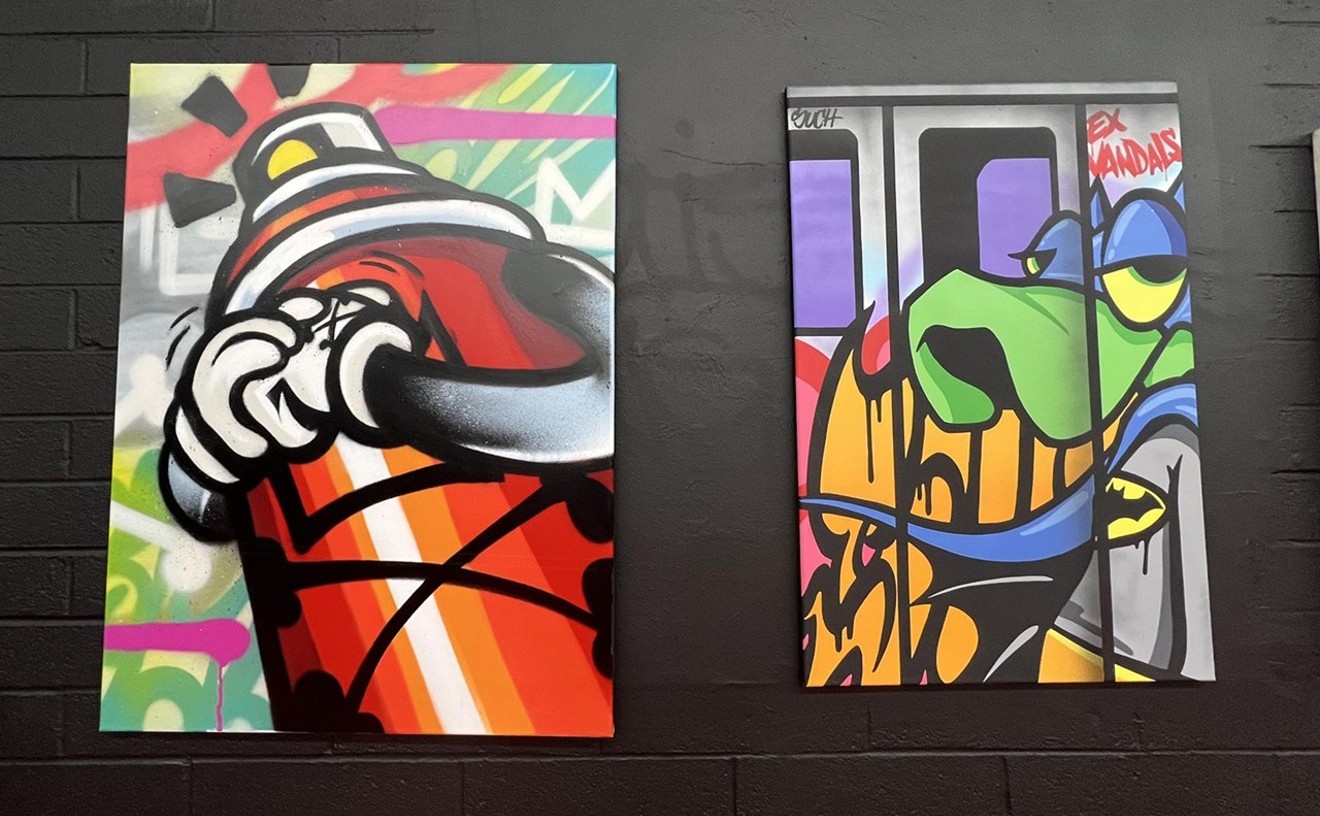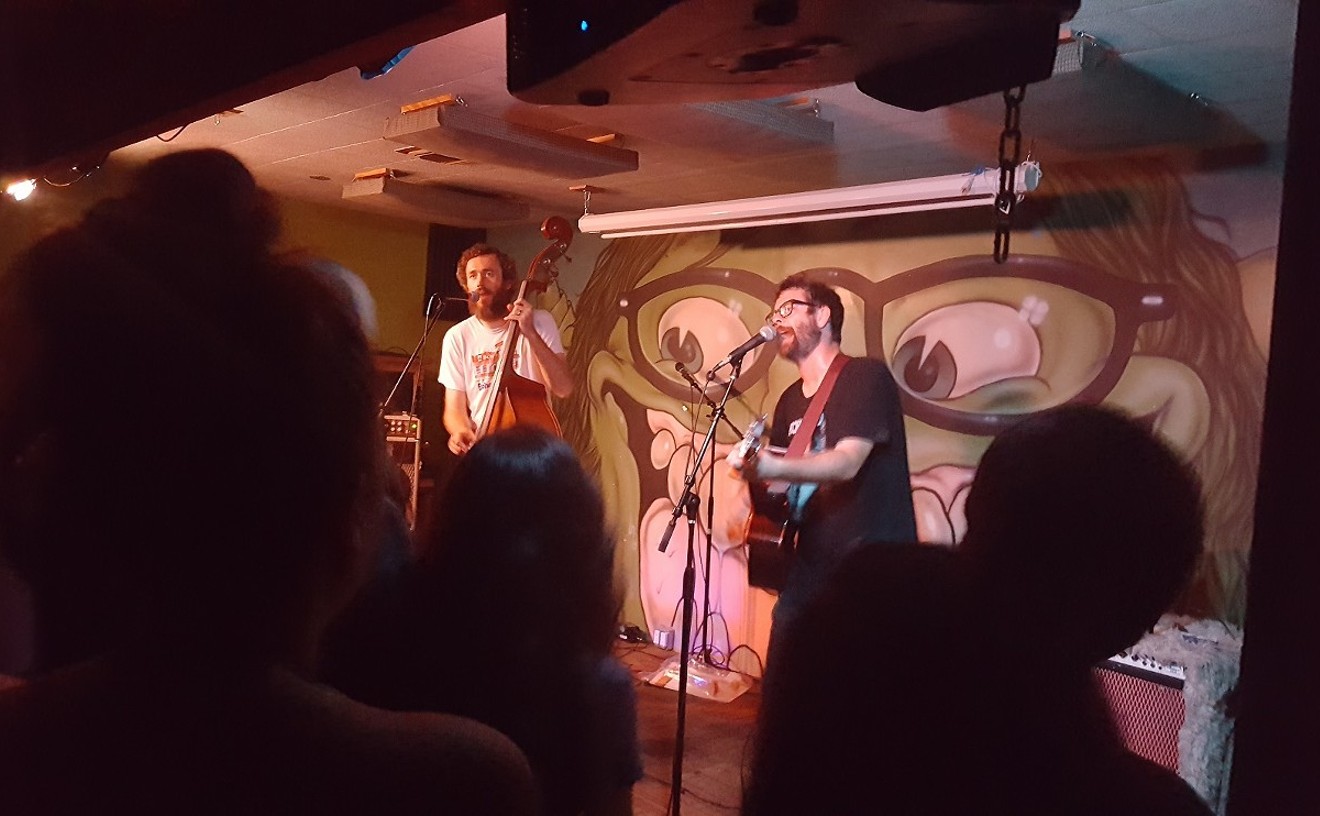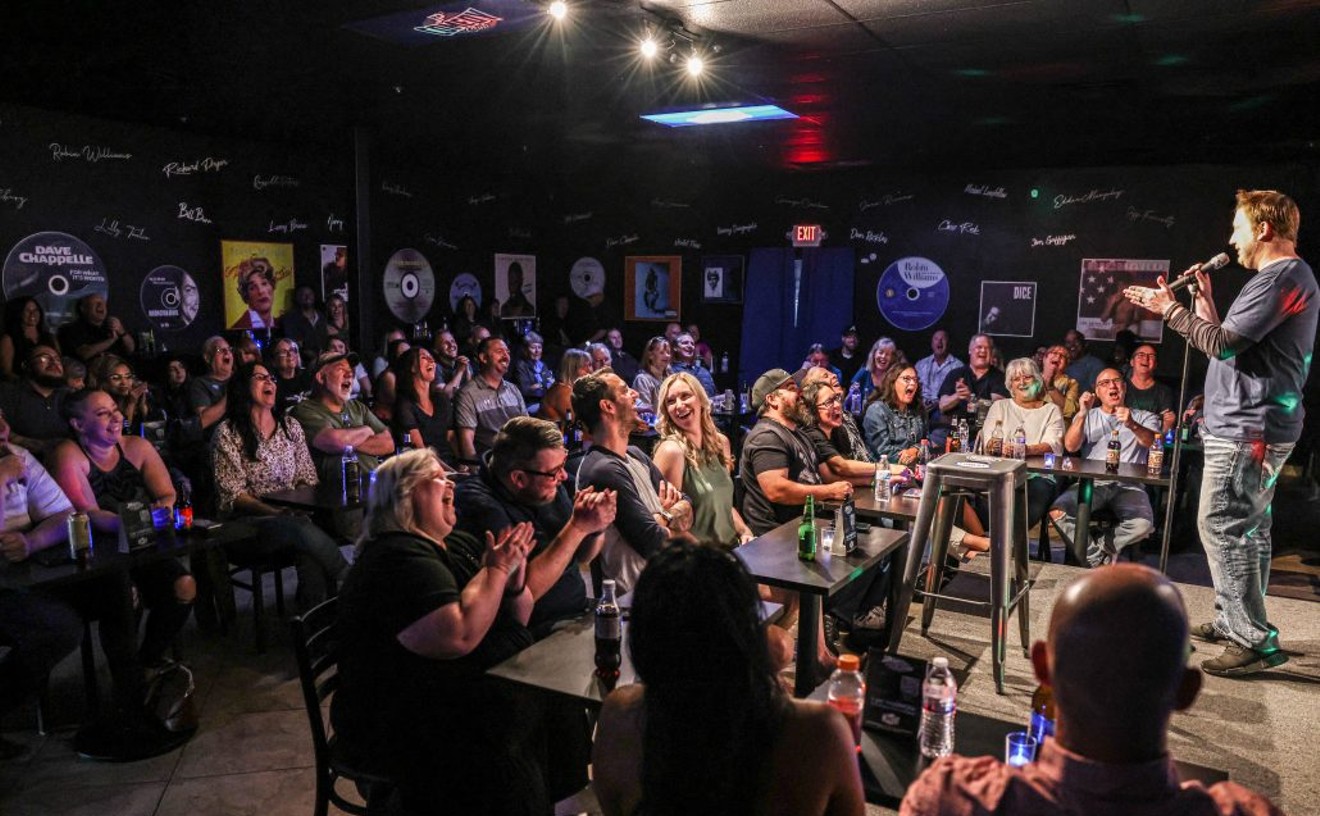"Double Vision" at the Phoenix Art Museum: There's a surprising harmony among the works of San Antonio artist Constance Lowe and Los Angeles artist Alicia Beach in their joint exhibition. Both manage to tame bright colors into soft, psychedelic tones. Both start from a central axis and create balanced, even images -- Beach by drawing two-handed and Lowe by drawing on one side of a Mylar sheet, then flipping it and repeating. Lowe's works are closer to her inspirational Rorschach ink blots, while Beach's have a wispier, more botanical feel, but they meld well together in one show because of their color and form. Although neither artist claims any intention to create particular objects with these abstract shapes, many of Lowe's pieces look like CAT-scan shots of body parts like skulls and uteruses -- the latter emphasizing the very feminine feel of the artwork in general. "Double Vision" is at the Phoenix Art Museum in the upstairs Marshall Gallery through August 15. 1625 N. Central Ave., 602-257-1880. -- G.C.C.
"Landscapes in the Fireplace: The Paintings of Pedro Alvarez" at the ASU Art Museum: This exhibition is a bittersweet experience for those familiar with this well-loved young Cuban artist and his irony-laced work. A collection of Alvarez's most recent paintings, ASU's exhibition unwittingly stands as a final tribute to the irreverent spirit that infuses his complex, multilayered paintings, since Alvarez committed suicide on February 12, 2004, in Tempe. To the end, his work put a tongue-in-cheek spin on less-than-lighthearted historical experience, including Latin American colonization, racism, cultural stereotyping and, of course, American globalization. Through June 19 at the Arizona State University Art Museum's Nelson Fine Arts Center, 10th St. and Mill Ave., Tempe, 480-965-2787. Reviewed April 1. -- K.V.
Temporary Public Art Projects at Burton Barr Central Library: Next time you stop by the Burton Barr Central Library -- maybe to catch the First Fridays shuttle, maybe to pick up a good book -- don't miss two of the temporary installations from Art Detour weekend that remain on display. Zarco Guerrero's "Beyond Boulders" is outside near the southeast corner of the building. The three petite versions of monumental pre-Columbian Olmec carved stone heads seem to be watching over the Deck Park crowd and, for the artist, "represent the blending of all races into the universal cosmic man/woman." Inside the library is Richard Hermann's nine-foot-tall, red vinyl llama. Looking like a great big red punching bag -- or, since it's positioned near the children's section, maybe a partner to one of those jumping castles you see at kids' birthday parties -- Hermann's llama is a playful contemplation of the natural world. Both works are part of the Phoenix Office of Arts and Culture's Artist Initiative. Through May at the Burton Barr Central Library, 1221 N. Central Ave., 602-356-3521. -- G.C.C.
Walt Wooten at the Heard Museum: Hanging on national-museum-style red walls in the Heard Museum's petite Lovena Ohl Gallery are 10 large paintings of Native American men in 19th-century traditional clothing, depicted standing before some of art history's most famous works in the Louvre. Based on the story of the Ojibwa men who traveled to Paris for the opening of his exhibition, New Mexico painter Walt Wooten has juxtaposed the two worlds that collided during this visit to the effect of making us wonder how they could have ended up there at all. The paintings are large and dramatic in the small gallery, and their quiet elegance heightens the odd feeling of looking at two very disparate subjects in one scene. Although the compositions are a bit cluttered by so many clothing details, the subtle drama of the scenes is worthy of contemplation. Through May 2 at the Heard Museum, 2301 N. Central Ave., 602-252-8840. -- G.C.C.
Chicano(a) Art: From the M.A.R.S. Collection at ASU Art Museum: In 1978, a group of artists and community leaders formed an artists' cooperative, Movimiento Artistico del Rio Salado (M.A.R.S.), to promote visual and performing arts by contemporary Arizona, Mexican-American and Chicano artists. After years of exhibiting around the Valley, the group settled in a downtown Phoenix location in 1981. The space closed and disbanded in 2003. From the archives of limited-edition prints produced by members to support the gallery, M.A.R.S. donated 43 to the ASU Art Museum, where they're now on display. With pieces like Carmen Lomas Garza's Las Peleoneras, depicting two women in a hair-pulling catfight outside the El Rio bar, there's plenty of vibrant imagery that conveys the cultural pride and printmaking mastery that the M.A.R.S. artists brought to downtown Phoenix. Through May at the ASU Art Museum's Nelson Fine Arts Center, 10th St. and Mill Ave., Tempe, 480-965-2787. -- G.C.C.










